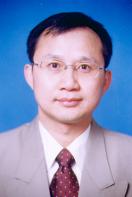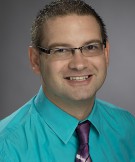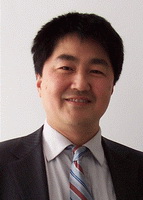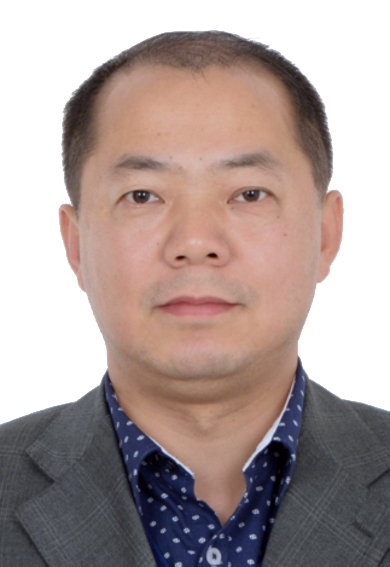Conference Chair
Professor Qingming LUO, Huazhong University of Science and Technology and Wuhan National Laboratory for Optoelectronics

Qingming Luo is the Executive Deputy Director of Wuhan National Laboratory for Optoelectronics (WNLO) and vice president of Huazhong University of Science and Technology (HUST), Wuhan, China. He is a Fellow of the International Society for Optics and Photonics (SPIE), The Institution of Engineering and Technology (IET) and The Optical Society (OSA).
His research interests focus primarily on multi-scale optical bioimaging and cross-level information integration. Since 1996, he has been devoted to new techniques and novel applications in life sciences, including laser speckle imaging (LSI) and combination with optical intrinsic signal imaging (ISI), small animal imaging of fluorescence diffusion optical tomography (fDOT) coregistered with micro-CT, micro-optical sectioning tomography (MOST), and functional near infrared (NIR) imaging. He is currently leading the project Visible Brainwide Networks at single-neuron resolution and the Chief Scientist of National Major Scientific Instruments & Equipment’s Development Project “Instrument Development and Application Demonstration of the Micro-Optical Sectioning Tomography System”. He created “the most detailed three-dimensional map of all the connections between the neurons in a complete mouse brain” and “demonstrated the first long-range tracing of individual axons in the mouse brain”. He is also the chief scientist of the project Novel Technologies and Methods of Optical Molecular Imaging for Protein Function in vivo supported by National Basic Research Program of China, which aims to develop a series of novel technologies and methods of optical molecular imaging, such as the high-resolution fast microscopy for simultaneously monitoring the molecular events of multiple proteins, multi-scale optical imaging for protein function, cross-level integration and visualization of the related information of the protein function.
Conference Co-Chair
Professor Christopher James, University of Warwick, UK

Professor James leads the Warwick Engineering in Biomedicine theme at the University of Warwick (UK), which brings together the diverse biomedical engineering research happening at the School of Engineering. His research centres on the development of biomedical signal and pattern processing techniques, as well as the use of technological innovations, for use in advancing healthcare and promoting wellbeing. His interest lies mainly in the field of neural engineering and in behaviour monitoring through unobtrusive measurements.
He is the Editor-in-chief of IET Healthcare Technology Letters, the new fast publication journal dedicated to biomedical engineering and computer/information science for healthcare.
Keynote Speakers
Dr. Cristian A. Linte, Assistant Professor at Rochester Institute of Technology

Cristian A. Linte holds an academic appointment as Assistant Professor in Biomedical Engineering and Center for Imaging Science at Rochester Institute of Technology in Rochester NY. Dr. Linte received his PhD in Biomedical Engineering at the University of Western Ontario in 2010 and Robarts Research Institute. His research focused on the development, evaluation and pre-clinical integration of image guidance techniques for surgical navigation of minimally invasive cardiac interventions. Following his doctoral studies, Cristian spent two years at Mayo Clinic in Rochester, MN at the Biomedical Imaging Resource as a research fellow sponsored by an early career investigator fellowship from the Natural Sciences and Engineering Research Council and the Heart & Stroke Foundation of Canada to investigate novel paradigms for visualization and surgical navigation for minimally invasive therapy.
Prof. Zuhong LU, Department of Biomedical Engineering, College of Engineering, Peking University.

Chair Professor, Department of Biomedical Engineering, College of Engineering, Peking University. He won the outstanding young investigator award, National Natural Science Foundation of China in 1996, obtained distinguished professorship of Cheung Kong Scholars, Ministry of Education of China, Li Ka Shing Foundation in 1999, and leader of Program for Creative Research Teams for bioelectronics, National Natural Science Foundation of China in 2001.
Prof. Xin TIAN, Dean of Biomedical Engineering,Tianjin Medical University

Xin Tian received her Ph.D degree in Biomedical Engineering from the University of New South Wales, Australia in 1991. Since January 1997, She is with the school of Biomedical Engineering at Tianjin Medical University as a professor. Her research interests in neural Engineering including, networked brain, neural signal processing and neural computing.
Prof. Shouyan WANG, Suzhou Institute of Biomedical Engineering and Technology

Shouyan WANG is the director of Biomedical Electronics Department at Suzhou Institute of Biomedical Engineering and Technology, Chinese Academy of Sciences. His research focuses on the intelligent neuromodulation of deep brain stimulation for neurological diseases, including identification of biomarkers from human deep brain local field potentials, development of miniaturized adaptive electrical or optical stimulator, and monitoring of motor or sensory behaviors with wearables devices. His research interest is in the neural engineering and neuro-rehabilitation field. He has built the Key Lab of Neural Engineering and Technology at Suzhou, which is a cross-disciplinary platform to integrate research of engineering, neuroscience, neurology and neurosurgery.
|